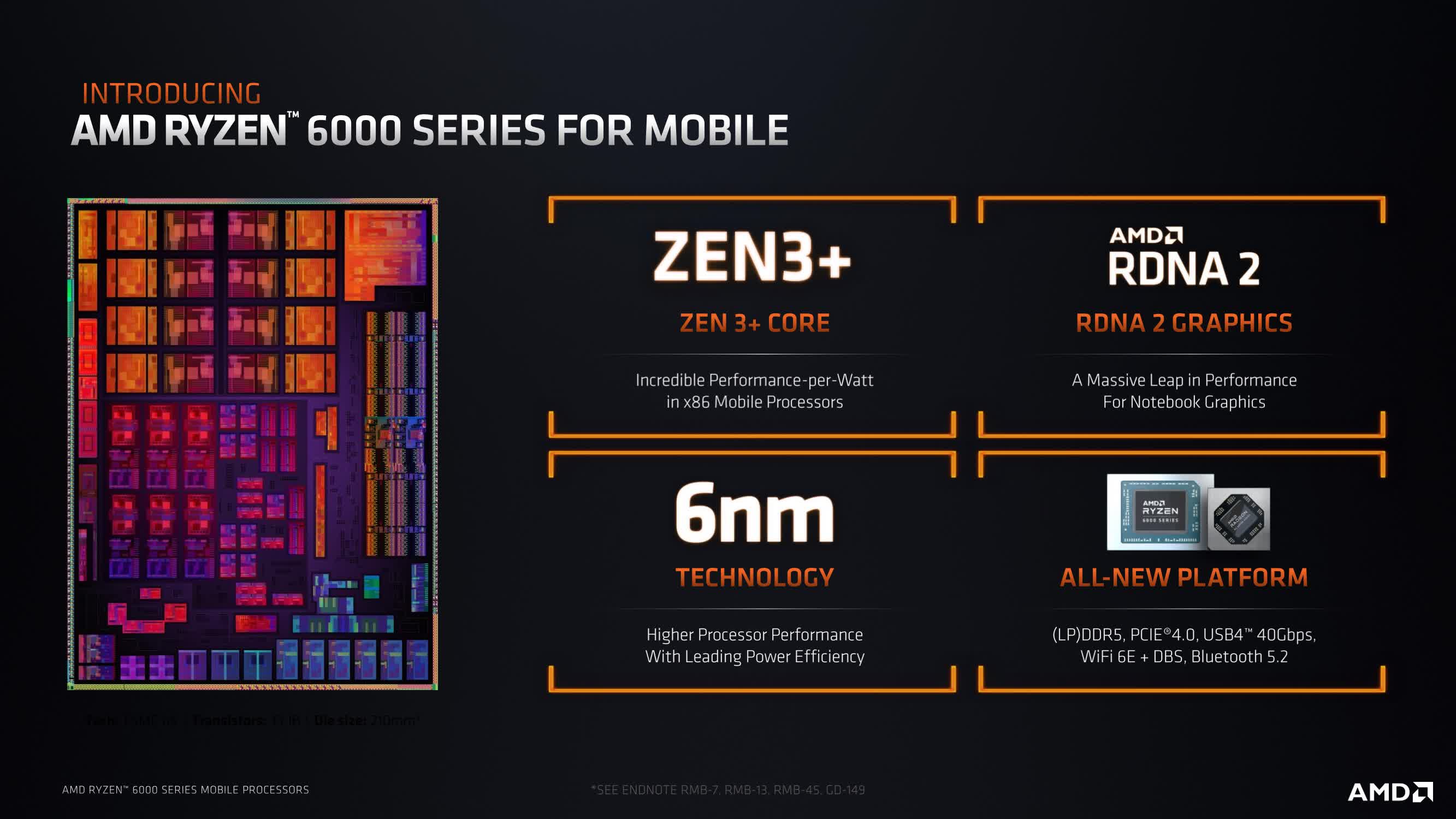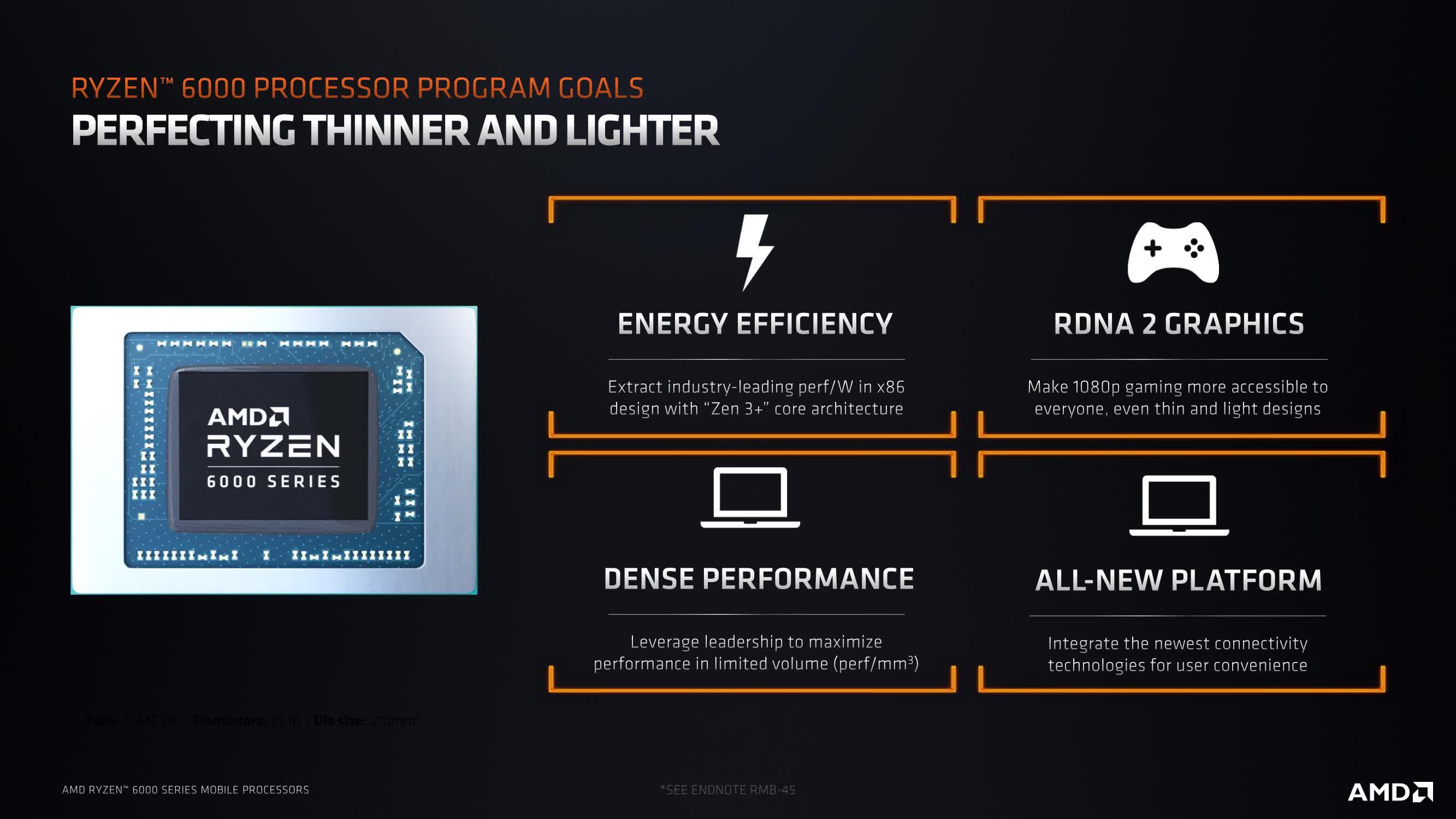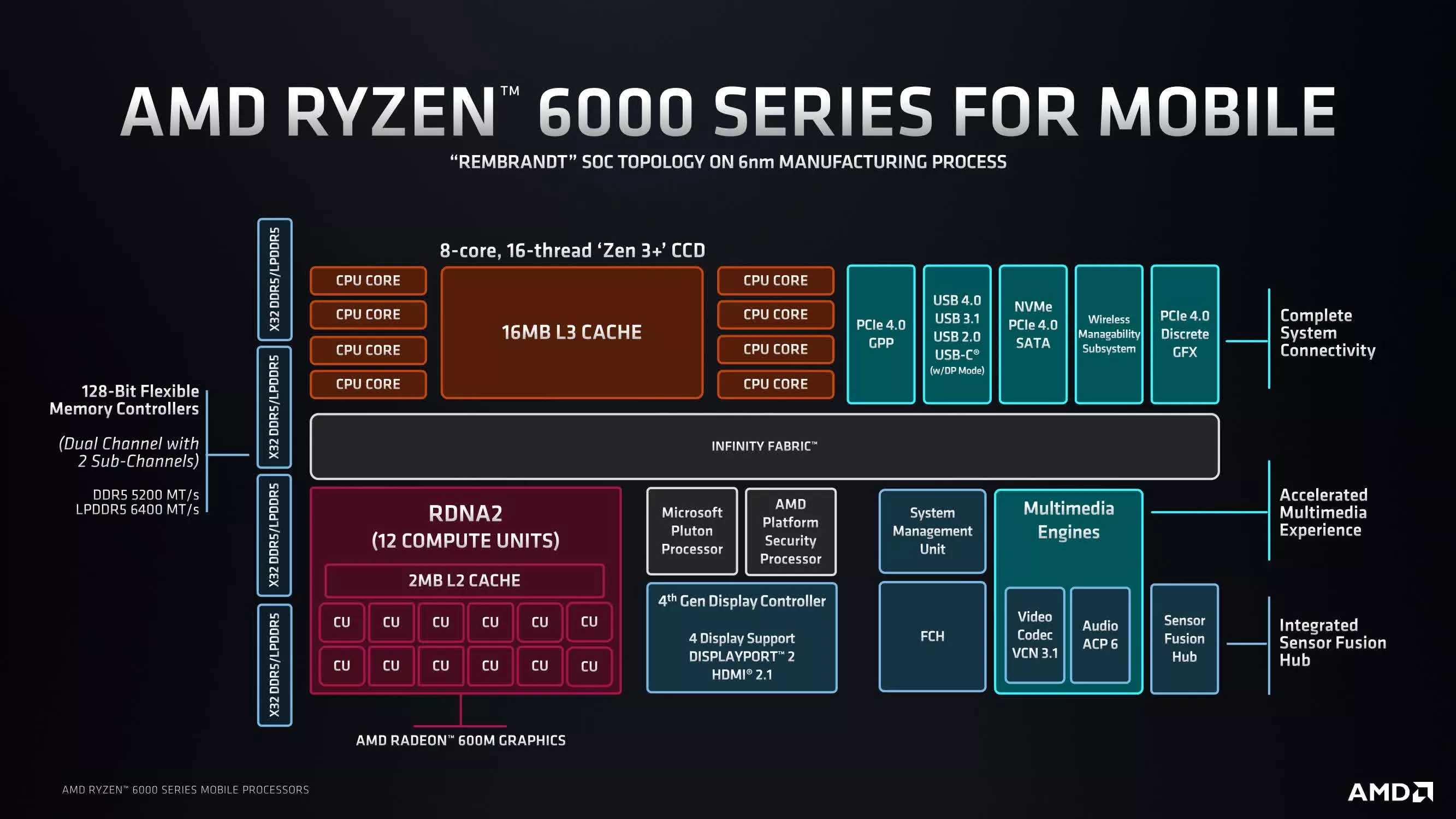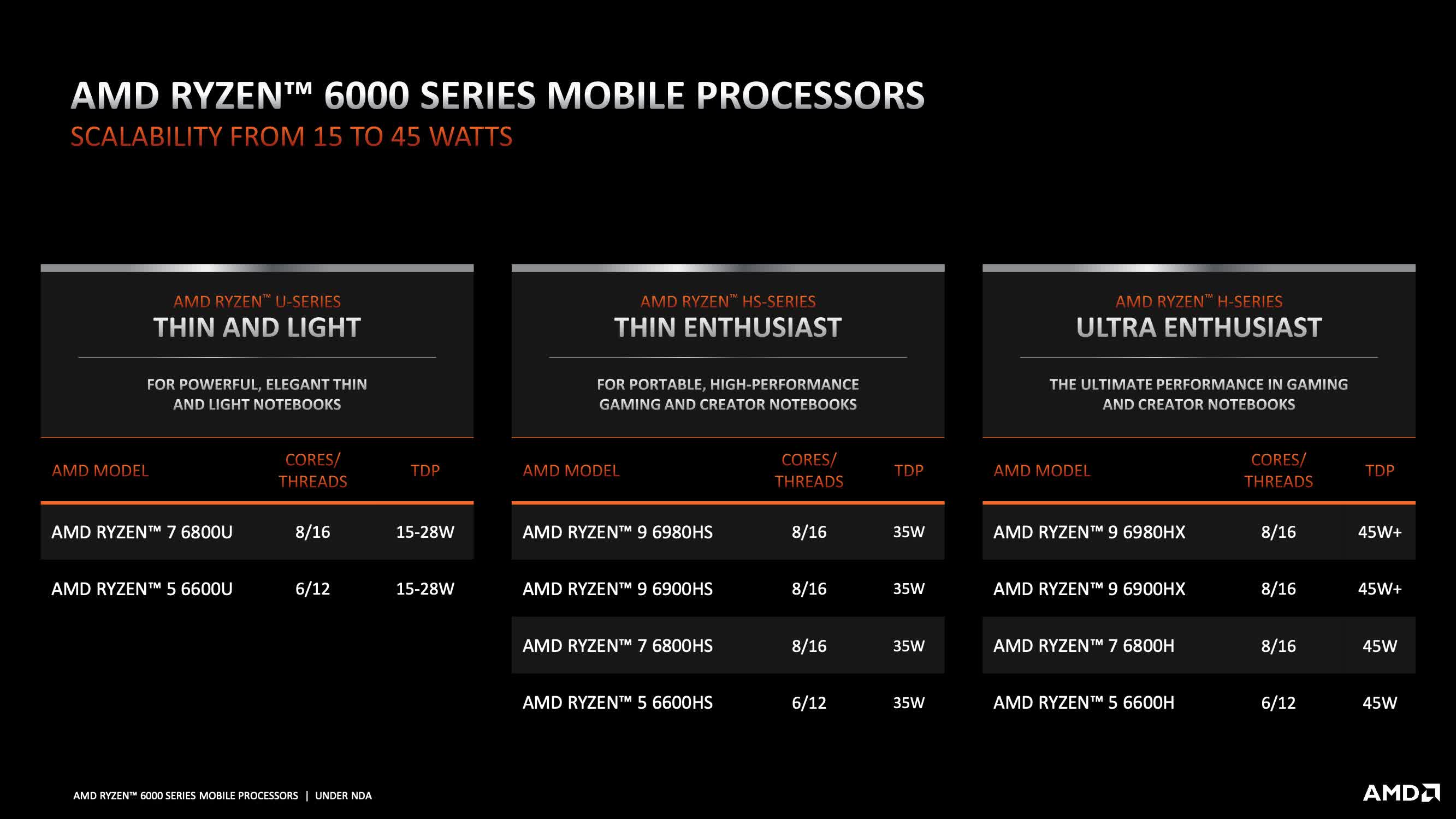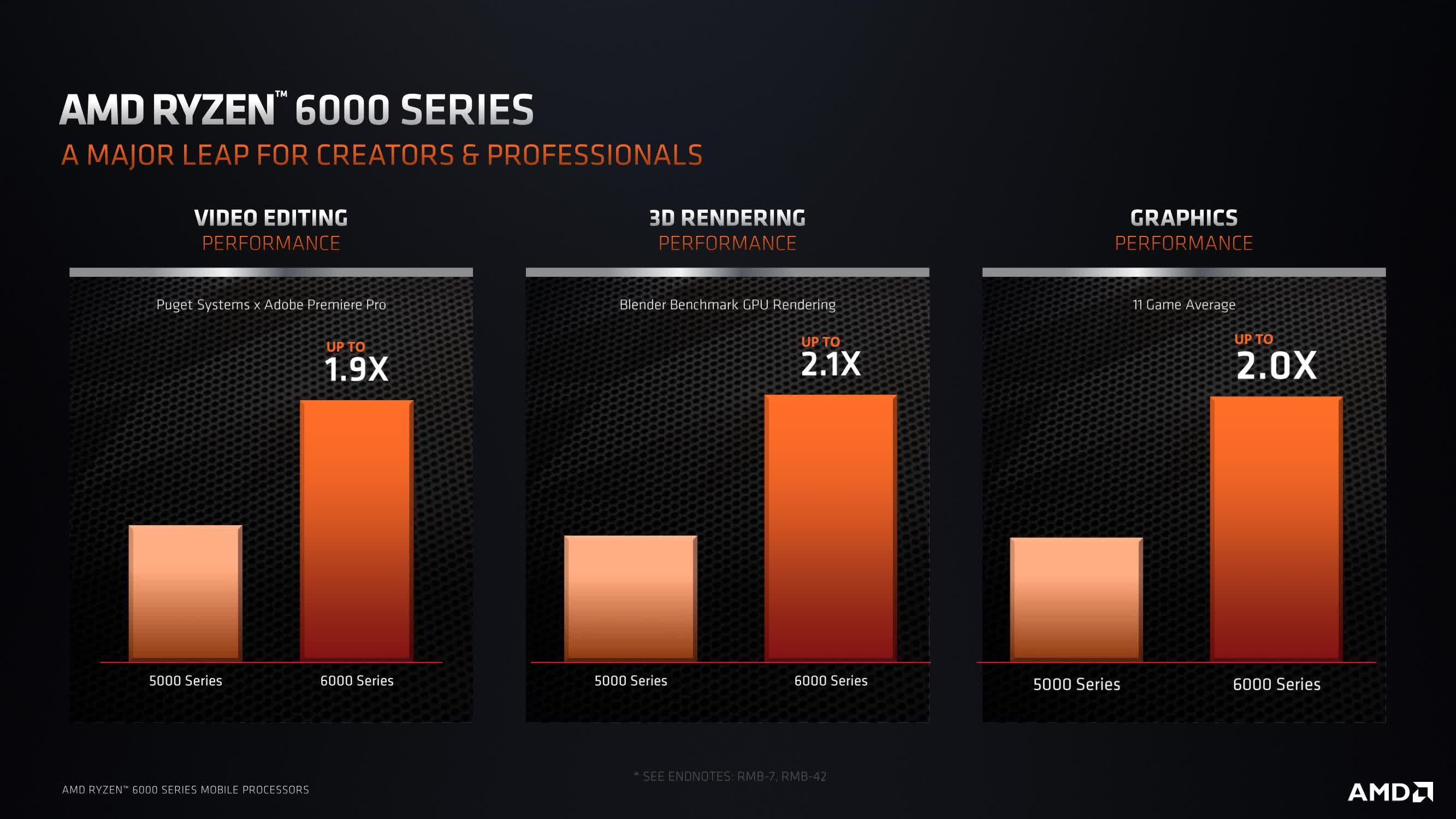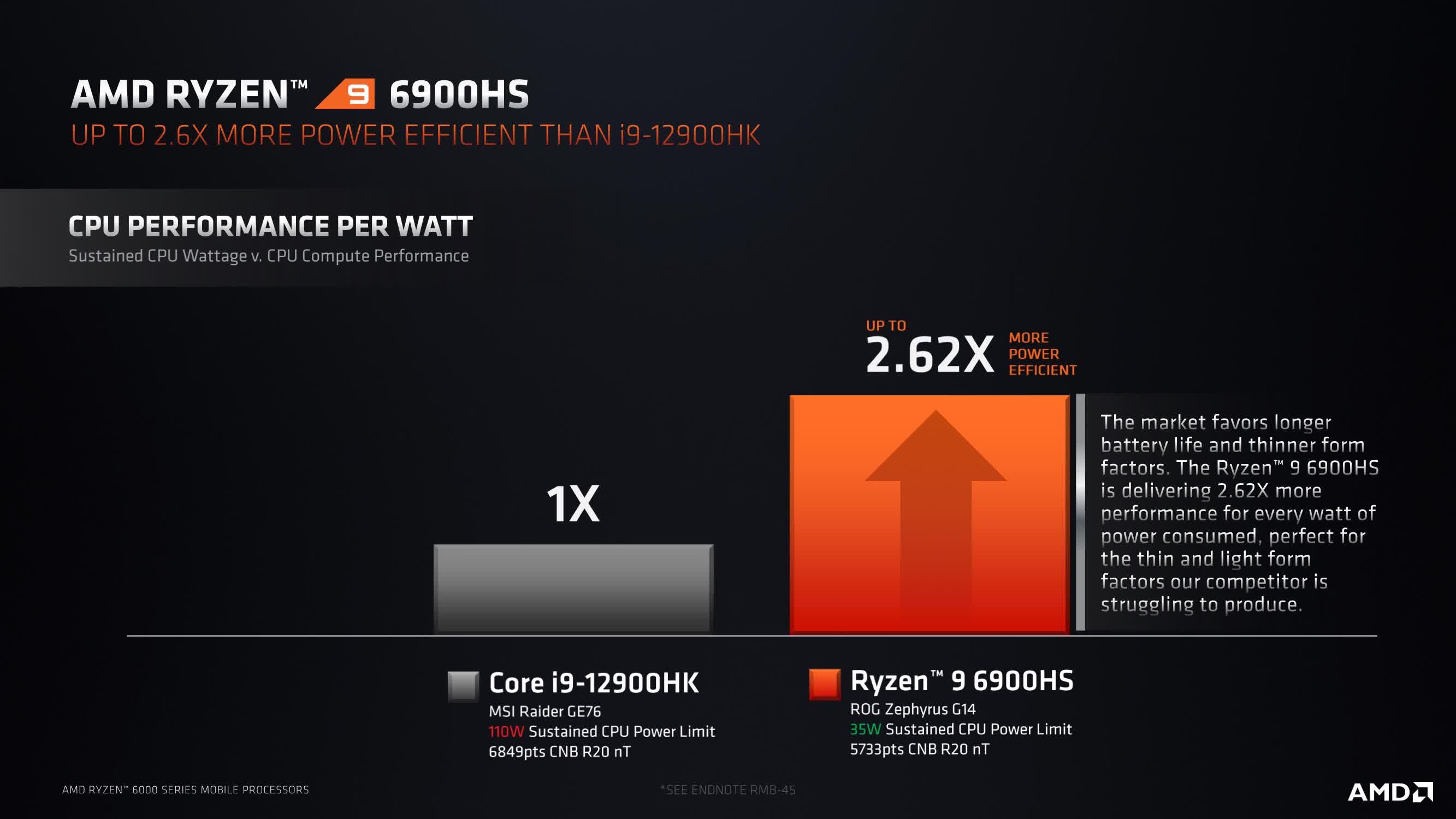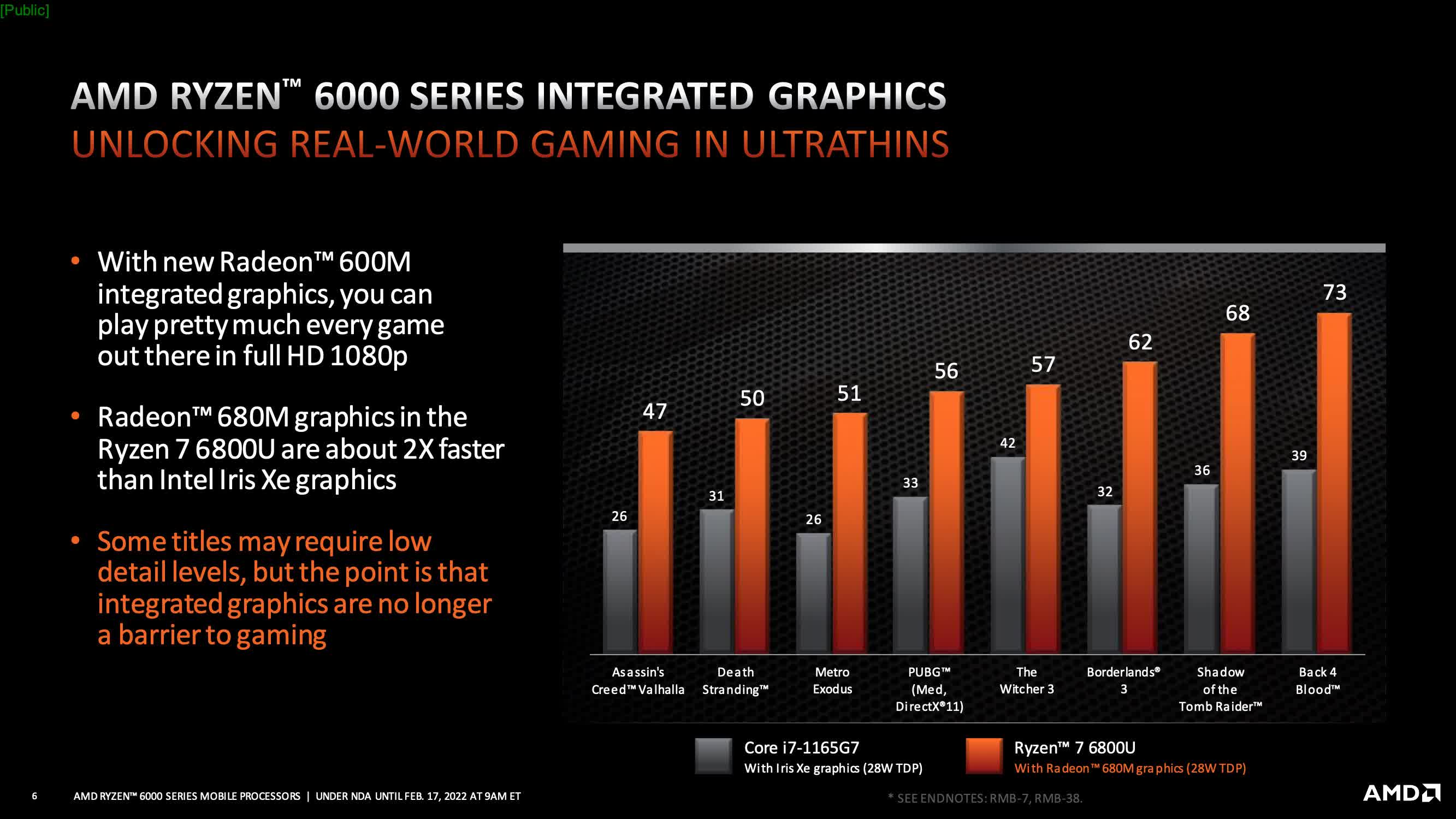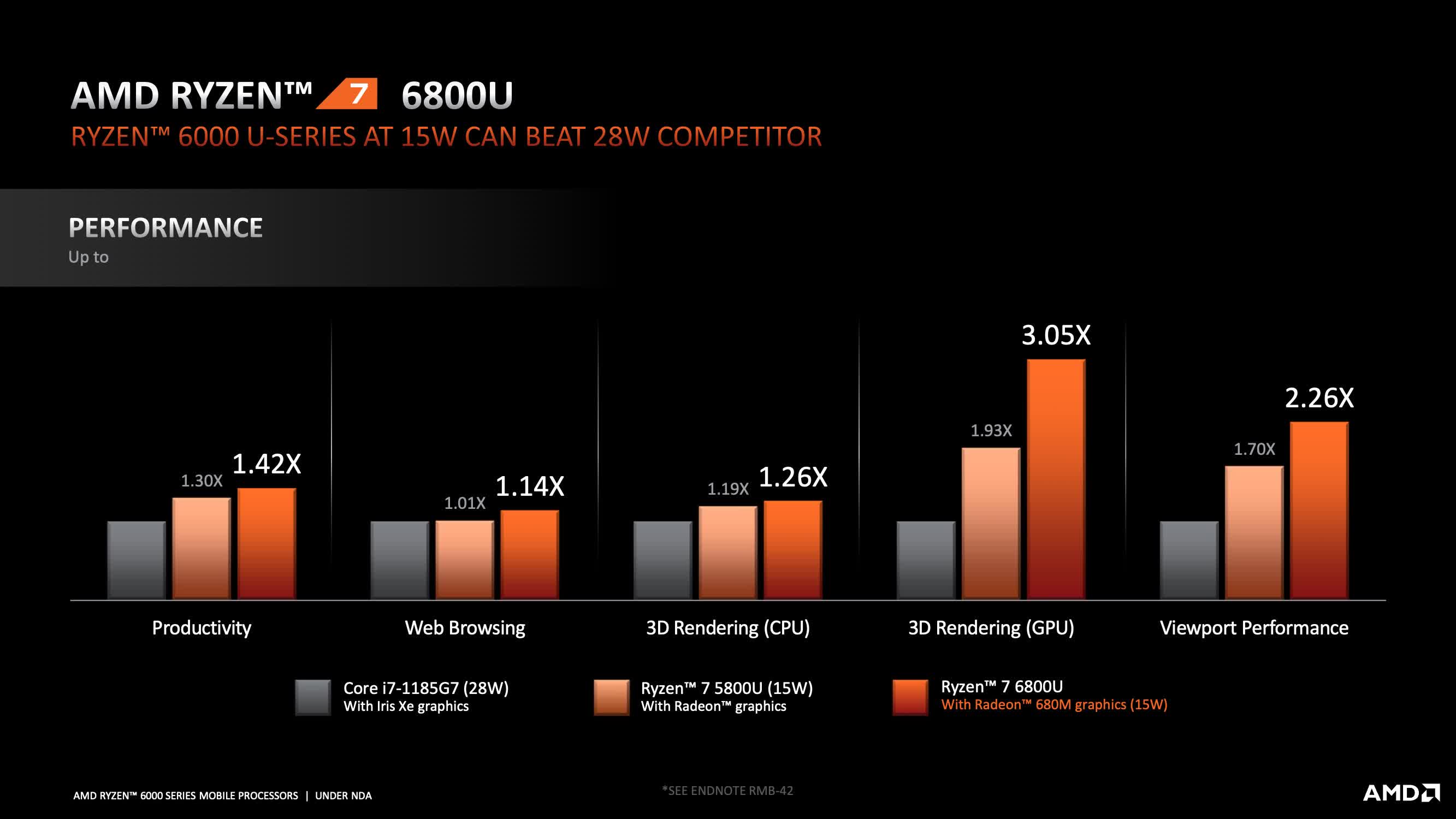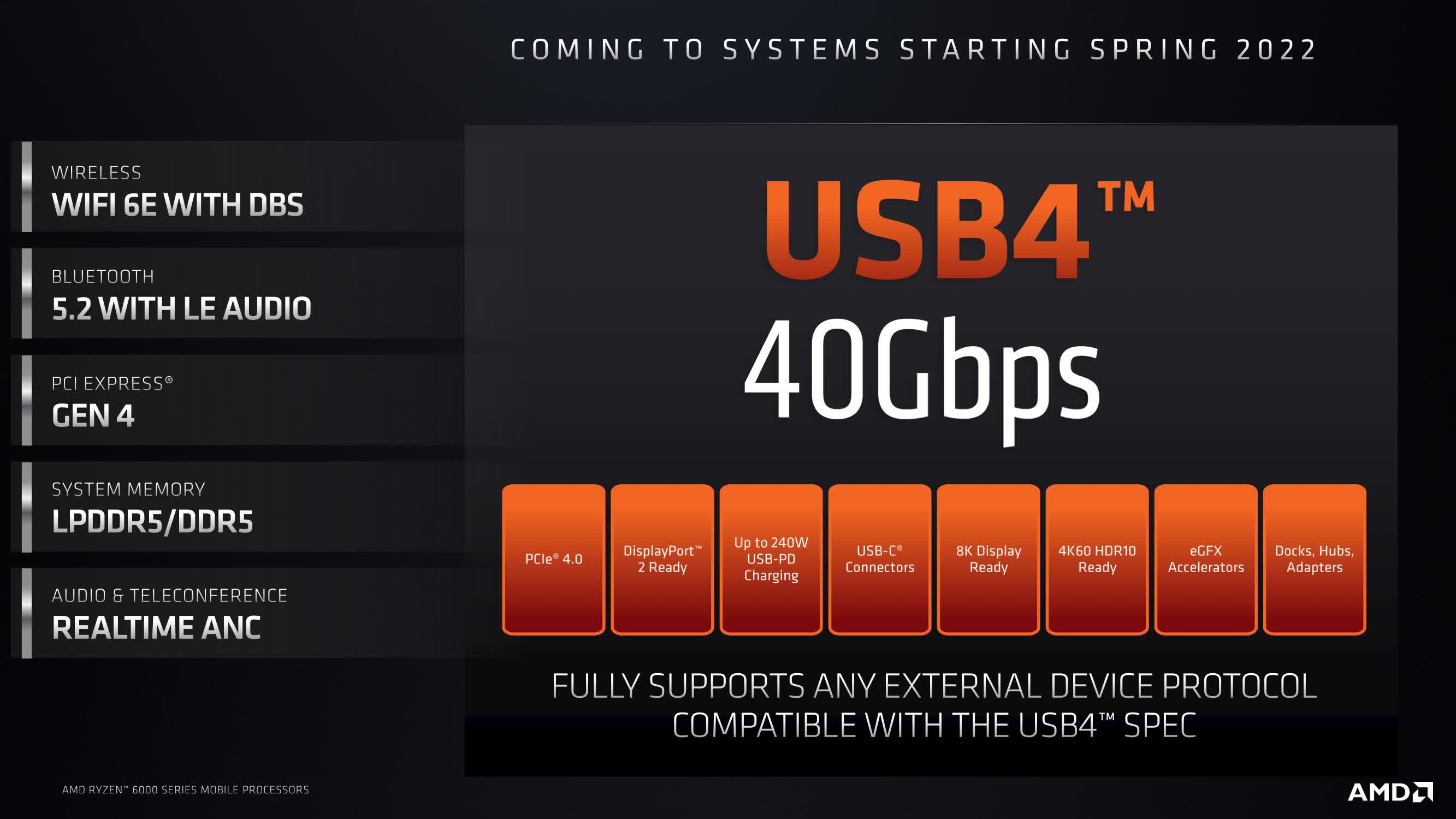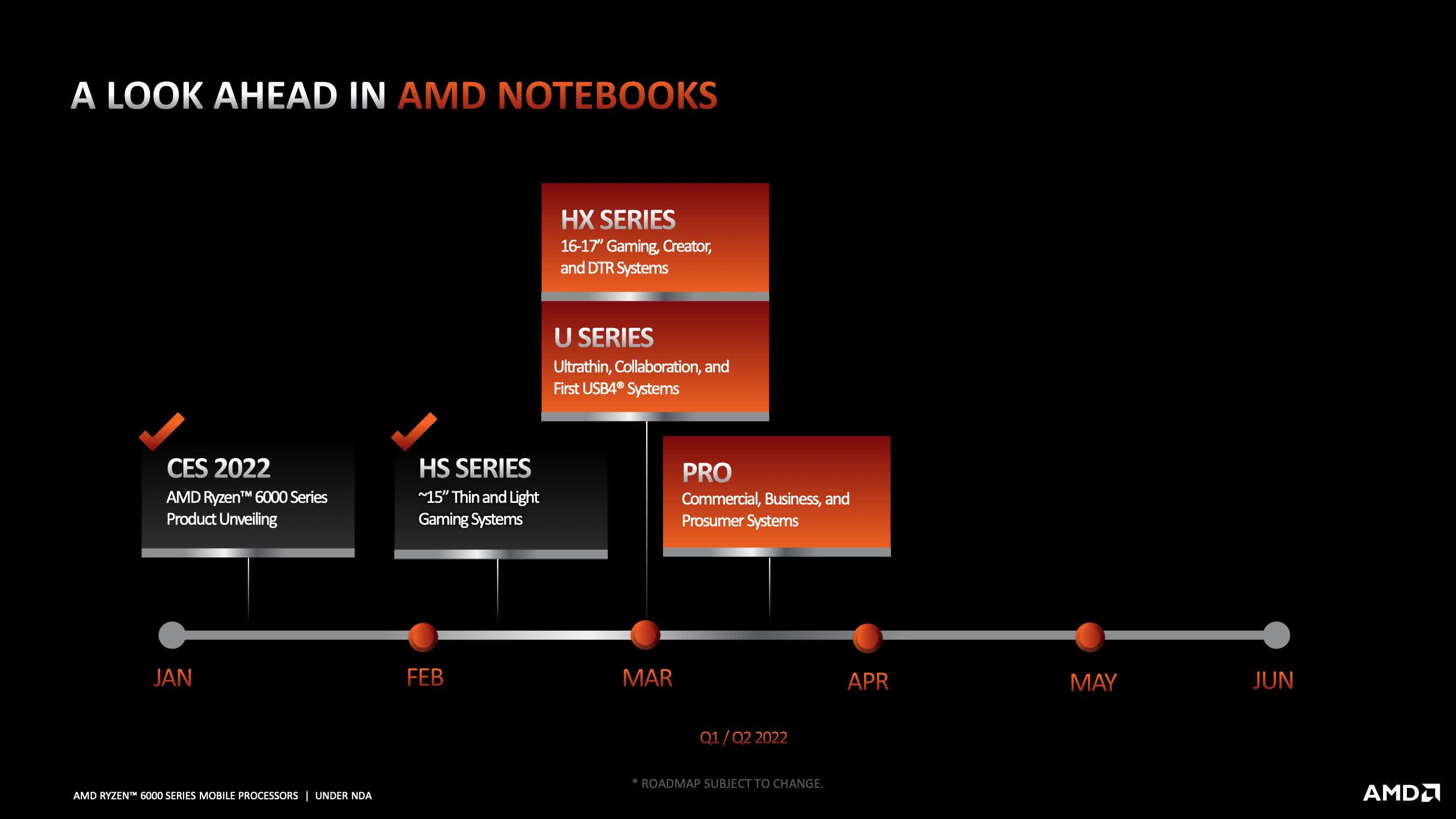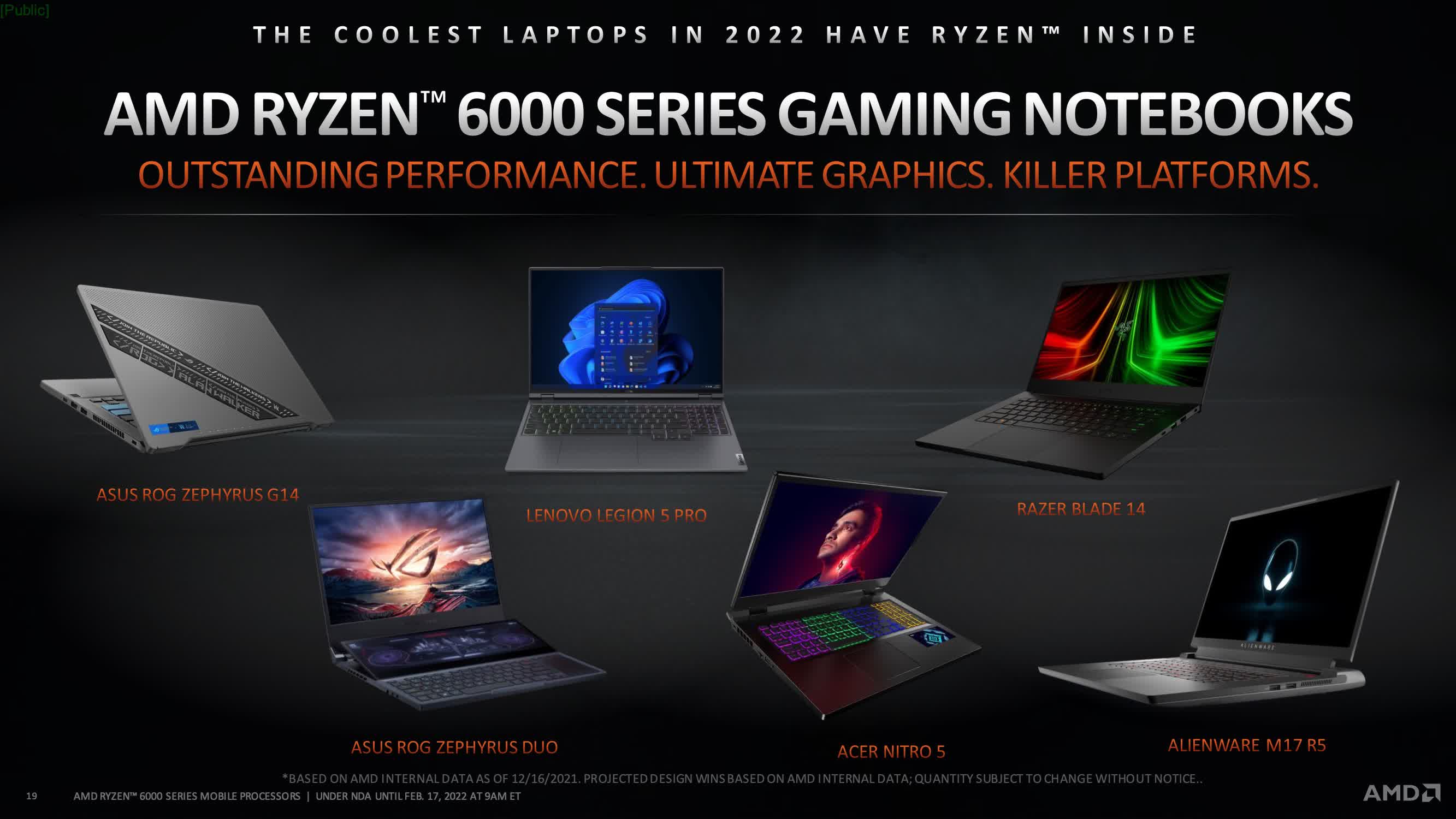Forward-looking: AMD is launching today the new Ryzen 6000 Mobile processors and we're able to disclose all information about the APU architecture, including performance benchmarks. Unfortunately we only received our review hardware a few days ago in the form of the new Asus ROG Zephyrus G14, which wasn't enough time to complete our benchmark suite. But rest assured, we'll have a full review and breakdown of the Ryzen 9 6980HS very soon. In the meantime, let's address this: what exactly is the new Zen 3+ architecture?
As announced back at CES, Ryzen Mobile 6000 is based on a new APU design that's a complete overhaul of the platform. Everything has been upgraded, from new Zen 3+ CPU cores, to RDNA 2 integrated graphics, to DDR5 support and more. AMD's previous APUs have lagged a little behind in the features department – for example only including PCIe 3.0 support and outdated Vega graphics – so this is a large redesign to bring Ryzen APUs up to speed with competitors like Intel 12th-gen.
One of the key improvements is the move from Zen 3 to Zen 3+. AMD says this is a "highly efficient core" and that "the plus is all about efficiency," but what does this actually mean? How does it differ compared to Zen 3? What are the potential performance gains on offer, and where do they come from?
Essentially, all the changes made to Zen 3+ vs. Zen 3 are focused on reducing consumption and optimizing for efficiency. AMD told us there are no fundamental IPC improvements with Zen 3+ compared to Zen 3, indicating that the fundamental building blocks of the CPU core, such as the micro-op queues, branch predictors, execution engine, ALUs and so on, are all unchanged. We also see the same cache layout with 16MB of L3 and 4MB of L2.
Where the differences lie is in how these CPU elements are managed and how optimized the design is. AMD lists a key feature of Zen 3+ as being design optimizations to reduce leakage, but the majority of the changes are to power management. More sleep states with deeper control over individual elements of the CPU architecture, such as the new CPPC per thread capability and an enhanced CC1 state to sleep cores when not utilized. Zen 3+ can also now delay L3 initialization among other new features. AMD claims there are over 50 changes and we only got previewed on a handful of them.
Key to achieving some of these goals is the shift from TSMC's N7 to N6 node, which provides an improvement in performance vs power thanks to the introduction of EUV layers in the manufacturing process. 6nm isn't a massive step up over 7nm, it's an iterative evolution on the same technology that assists AMD in enhancing performance per watt for Zen 3+.
But the efficiency enhancements don't stop with the Zen 3+ CPU core, they extend to the entire SoC. These Ryzen 6000 APUs include better partitioning of various SoC components, such as the GPU and display engine, allowing for tighter control over power. An example of this would be using a laptop that supports panel self refresh. These new APUs have the ability to fully power off the display section of the APU when panel self refresh is engaged, reducing power for that element, potentially while the CPU is being run at full power for a background render.
There are other enhancements such as improved clock gating, better current control methodologies, and new deep low power states. The key goal of many of these was to reduce power consumption during extremely brief periods of rest, such as a single millisecond where the system isn't doing anything. Ensuring the system is consuming the minimum amount of power during any periods of rest extends battery life.
When you have new CPU and SoC architectures designed for efficiency, the goal is typically to improve battery life and performance per watt. AMD was throwing around numbers like "24 hours of battery life," but it's always hard to know exactly what that means and in what context – like how the system was being used.
In a more apples to apples comparison, AMD is claiming 8% longer battery life in Windows idle, 12% in modern standby and 17% in video playback comparing 6000U to 5000U series processors at 15W. At CES, AMD also showed claims like 30% lower power consumption for video conferencing, 15% lower for Chrome browsing, and so on. I'm sure we'll see test results for those claims shortly.
But this also throws up the question, if the design is optimized for efficiency, Zen 3+ has no IPC improvement and all the changes are to enhance performance per watt. So does performance actually improve this generation? According to AMD, the answer is yes, due to two factors.
In optimizing for efficiency, AMD has improved performance per watt with Zen 3 and Ryzen 6000 APUs. In power constrained form factors like laptops, this doesn't typically reduce power usage – the chip will still run at 15W, 28W, 45W or any limit that is set for that APU. So if the watts stay the same, and performance per watt improves, what must get better? That's performance, of course.
For Ryzen Mobile 6000, that's coming in the form of a clock speed boost, and we see that across the line-up. The Ryzen 7 6800U tops out at 4.7 GHz up from 4.4 GHz, while the H series parts now hit 5.0 GHz, up from 4.8 GHz. 35W HS parts have higher base clocks as well, improved by up to 10 percent, while the U series gets up to a 40 percent bump.
Based on the data AMD has shared so far, it seems clear that the performance gains from Ryzen 6000 and Zen 3+ are going to be larger at lower power limits. Shaving off half a watt makes a big difference at 15W, but a comparatively small difference at 45W. This is also why Zen 3+ isn't headed to the desktop as a mid-cycle refresh before Zen 4 arrives. Zen 3+ might have delivered better power consumption, but without gains to IPC, it just wasn't going to bring a big jump in performance.
These new changes are also different to when Zen was upgraded into Zen+, and also play into why Zen 3+ isn't targeting desktop platforms. While Zen+ did focus on improving efficiency and raising clock speeds, and like Zen 3+ it used a revised process node, Zen+ also saw reductions in cache and memory latency, increased cache bandwidth and a several other features for a slim 3% jump in IPC (which combined with a higher clock, it resulted in a respectable performance uplift). Zen 3+ doesn't appear to feature the same optimizations to cache, and as a result doesn't see higher IPC versus Zen 3.
There are a few other features introduced with Ryzen Mobile 6000 worth mentioning, so let's cover them. A huge improvement is the use of RDNA2 graphics, finally ditching Vega compute units. The switch over to RDNA2 also brings more compute units for Ryzen 6000, 12 vs. 8 and we're now finally seeing more CUs than we got with the original range of Zen+ APUs that packed 11.
The RDNA2 GPU is available in two configurations: the Radeon 680M in Ryzen 7 and 9 APUs and the Radeon 660M in Ryzen 5. The difference is 12 vs. 6 compute units, and 2.4 vs. 1.9 GHz clock speeds. AMD is claiming huge generational performance differences, up to 2x at higher power levels, but of course, we'll be able to test that soon.
Ryzen Mobile 6000 exclusively uses DDR5 or LPDDR5X technology, at up to 4800 and 6400 speeds, respectively. To be clear, that means no DDR4 support here. This might increase laptop prices slightly compared to previous generation DDR4-based systems, however we've been told from several OEMs that DDR5 supply and pricing is reasonable compared to the often horrific scenes we see for desktop modules. DDR5 support is crucial for the performance gains seen with the new RDNA2 GPU.
Ryzen Mobile 6000 supports USB4, including all the bells and whistles like PCIe over USB, 240W of power delivery, various display protocols and so on, depending on how the OEM implements the port. AMD USB4 ports will also support Thunderbolt devices, one of the crucial but optional features of the USB spec, although they're not advertising this capability just yet as they are still putting it through the certification process. This will give AMD laptops Thunderbolt interoperability for the first time (finally).
The display engine supports HDMI 2.1 at up to 48 Gbps, the full HDMI 2.1 spec; and DisplayPort 2 up to 40 Gbps, the second from highest DisplayPort 2 configuration (this is UHBR 10 not UHBR 20) and the first time we've seen a device support DisplayPort 2 output. And up to 4 display outputs, more than the standalone discrete Radeon RX 6500 XT GPU.
The media engine has been upgraded to support AV1 decoding and VCN 3.1, which is actually a step newer than VCN 3.0 we get with Navi 2 GPUs based on RDNA2. This is a big improvement over prior GPUs which only used VCN 2.x and didn't support emerging tech like AV1. Combined with the much faster iGPU, this should lead to large gains in hardware accelerated apps like Adobe Premiere.
PCIe 4.0 is supported in an eight lane configuration for discrete graphics. This is an improvement over the PCIe 3.0 we got previously, and as such provides double the bandwidth, however it's not the move up to x16 lanes that many would have liked to see. Despite this, Intel 12th-gen mobile parts are also limited to PCIe 4.0 x8 support.
Finally, we have support for on-die active noise cancellation in a low power state, and Microsoft's Pluton security processor.
That's a quick overview of what Ryzen 6000 series APUs are looking like from an architecture standpoint, and the features they are set to provide. We'll be back soon with a full-on performance test.
